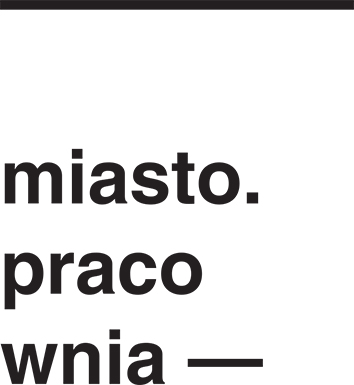
(for English scroll down)
Alternatywne sposoby spotykania na czas dystansowania. Eksperyment w procesie.
Hybrydowe formy przestrzenne służą jako emergentne miejsce spotkań. Instalacja łączy w sobie znajome funkcje, ale występuje w opozycji do ich wyobrażonej formy oraz sposobem używania. Punktem wyjścia była idea ławki jako archetypu spotkania i przebywania w przestrzeni publicznej. Punkty wyjścia są po to, by je deformować i/lub hodować na nich narośla (huby). Pierwszym wcieleniem jest modularna mezeoławka, która może podlegać rearanżacji i zmianę funkcji poprzez zmianę konfiguracji modułów.
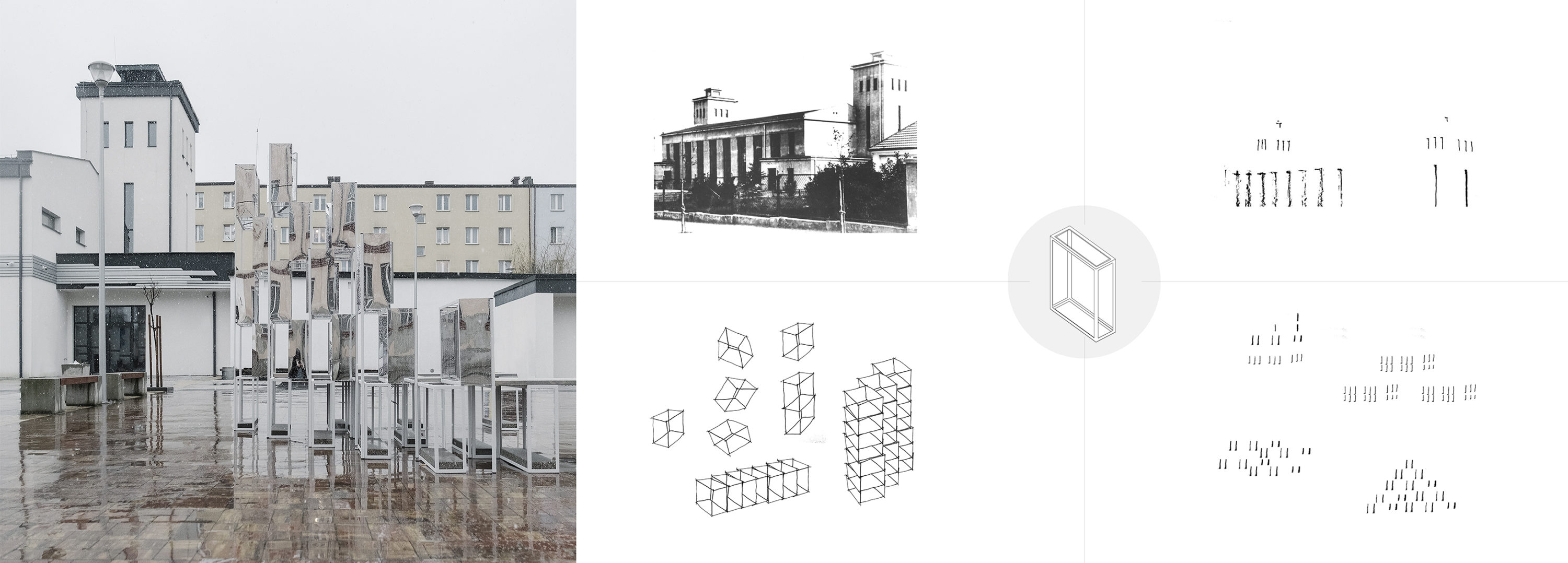
Instytucje kultury i lokalne centra sąsiedzkich spotkań trwają w trybie pandemicznego zamrożenia. Proponujemy scenariusz, w której funkcja budynku jest kontynuowana: wylewa się na plac przed nim. Zaczepienie funkcji kulturalnej i integracyjnej w publicznej przestrzeni otwartej zapewnia ich inkluzywność poprzez fakt, że są darmowe, widoczne i dostępne.
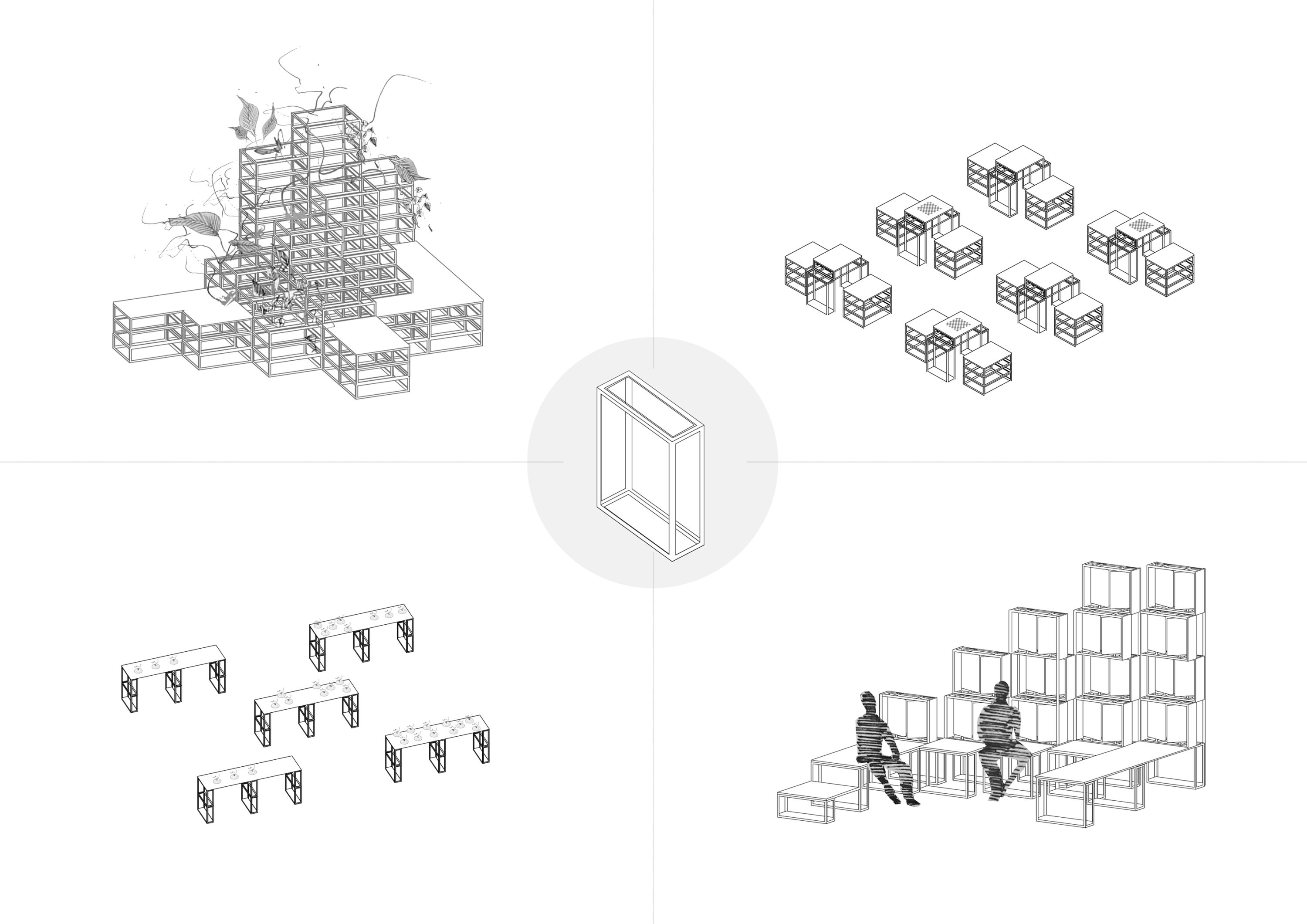
To nie jest ławka. To nie jest plenerowa wystawa. Muzeoławka jest hybrydą. To jest też forma, w której moduły mogą być ułożone w innej konfiguracji lub zwielokrotnione, żeby pełnić inne funkcje. Na wiosnę zrobimy ławkę-pionowy ogród. Latem chcemy zorganizować tu stragan. To proces i eksperyment.
Panele są obrotowe. Fotografie są naklejone na lustro. Masz się przyglądać, przeglądać, siadać, obracać i dotykać. Muzeoławka jest podświetlona w nocy, co podnosi walory estetyczne jak również poczucie bezpieczeństwa.
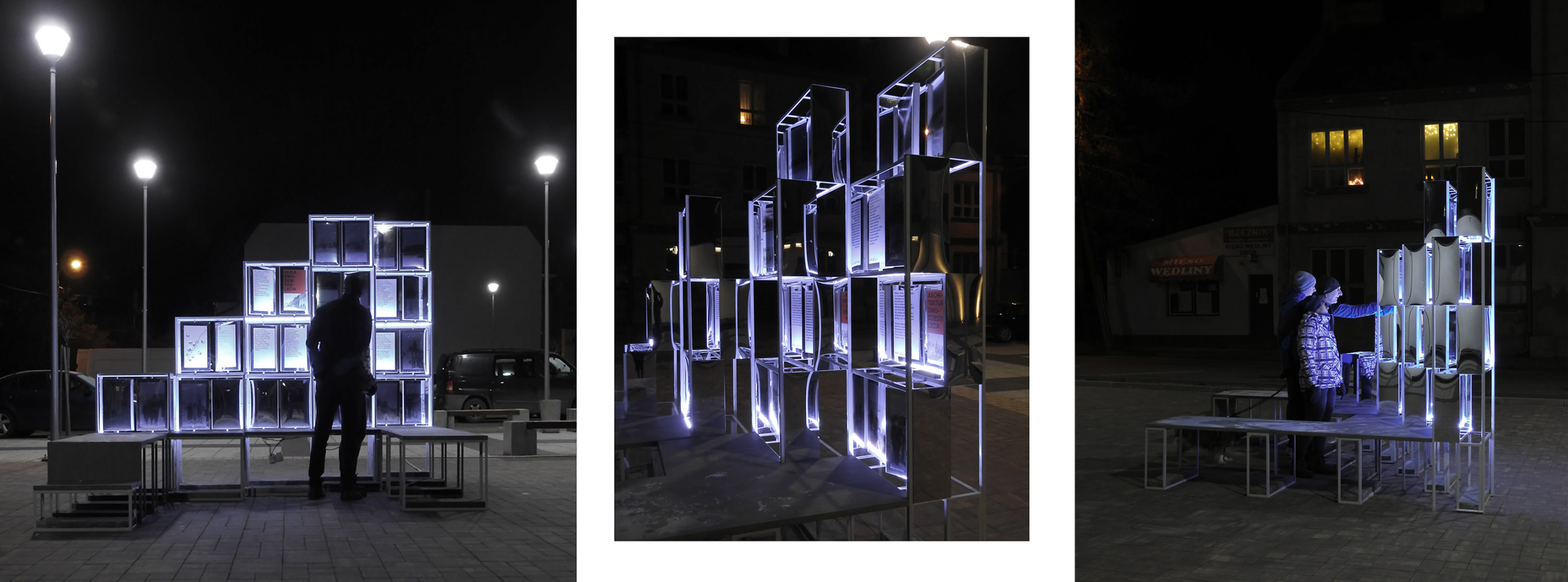

Ta hybryda jest zbudowana na idei spotkania i współpracy. Trzecie spotkanie to grupa założona w internecie, gdzie zorganizowana została oddolna zbiórka starych zdjęcia miasta. Ta wystawa to kolektywne archiwum i sąsiedzki fotoalbum. Drugie spotkanie to pytanie mieszkańców, jak powinna wyglądać ta instalacja. Idea efektu lustrzanego kalejdoskopu to ich pomysł. Pierwsze spotkanie to gra miejska, w której lokalna młodzież szukała rozwiązań zagadek ukrytych po mieście na podstawie mapy, kodów QR i archiwalnych zdjęć lokalnej architektury międzywojennej.
Proporcje zaprojektowanych modułów i ich rytmy są inspirowane otaczającą architekturą. Instalacja stoi na placu przed Starą Elektrownią, architektoniczną spuścizną czasów międzywojnia, w którym obecnie mieszczą się różne instytucje kultury. Wartością dodaną jest fakt, że projekt realizowany jest w mniejszym mieście. Wierzymy, że to najlepsza przestrzeń do testowania innowacyjnych rozwiązań społeczno – przestrzennych. Poza tym, sztuka i design nie powinny być zarezerwowane dla metropolii.

Hybrydowe Formy przestrzenne powstały w Ostrowi Mazowieckiej w ramach projektu Infrastruktura Niepodległości: Ostrów Mazowiecka: Odkryj Ostrów Narodowego Instytutu Architektury i Urbanistyki we współpracy z Muzeum Dom Rodziny Pileckich w Ostrowi Mazowieckiej.
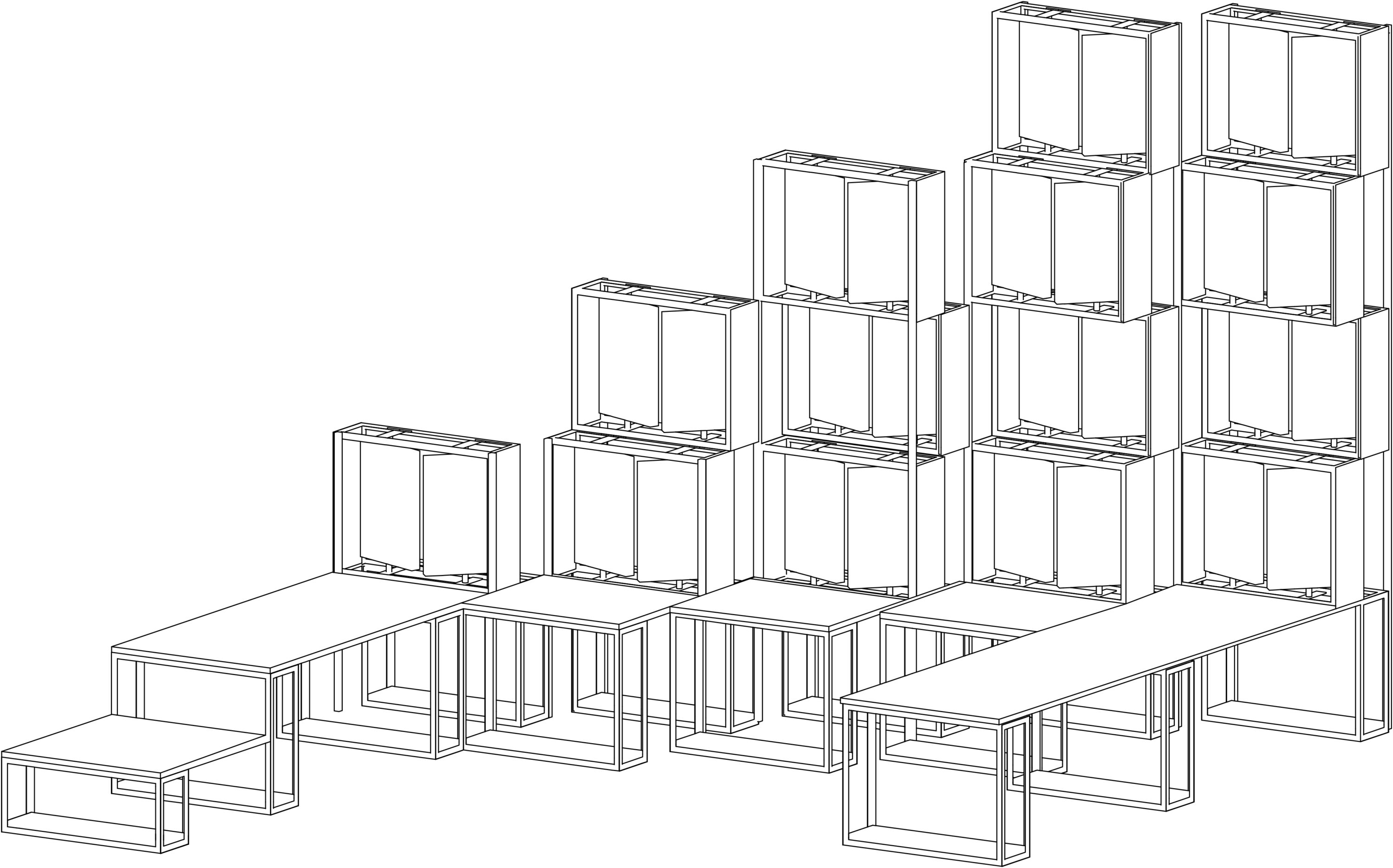
[eng]
Hybrid urban forms as emergent spaces of encounter. Experimental on-going project for alternative ways of integration during isolation.
A hybrid installation combining familiar functions, but remaining in opposition to their imagined and expected form and usage, is a response to the need for creating an alternative meeting space.
Our starting point was the idea of a bench as an archetype of meeting and being in public space. We believe that starting points are meant to mutate and/or grow conks on their trunk. The first incarnation is a modular musebench, which can be rearranged and repurposed by changing the configuration of the modules.
Cultural institutions and neighbourhood meeting centres are undergoing a pandemic freeze. We propose a scenario in which the function of the building continues: it spills outward, onto the square. Engaging the cultural and integration function in the public open space ensures visibility, accessibility, free availability, and inclusivity.
This is not a bench. This is not an open-air exhibition. The musebench is a hybrid. It is also a form in which modules can be rearranged in another configuration or multiplied to perform other functions. In spring, we will make a vertical garden-bench. In summer, we propose to turn it into a street market stall. It is a process and an experiment.
The panels rotate. The photos are glued onto the mirror. You are expected to observe, look in, sit, turn, and touch. The musebench is lit at night not just for aesthetics but also for safety.
This hybrid is built on the idea of meeting and working together. The first meeting was a group founded on the Internet, where we collected old photos of the town among the inhabitants. This exhibition is a grassroots, collective archive, a neighbourhood photo album. The second meeting involved asking the residents what the installation should look like. The idea of the mirror kaleidoscope effect came from them.
Proportions of the designed modules and its rhythms are derived from the surrounding. The project is located in a very small town, as we believe it to be the best space for testing innovative social and spatial solutions. Art and design should not be reserved for the metropolis alone.
Hybrid Urban Forms were built in Ostrow Mazowiecka in Poland, as a part of the project Infrastructure of Independence: Ostrow Mazowiecka: Odkryj Ostrow organized by National Institute of Architecture and Urban Planning and the Pilecki Family House Museum in Ostrow Mazowiecka // photos: Michał Sierakowski (NIAiU), Dominika Wilczyńska // video thanks to the courtesy of TV Ostrow
